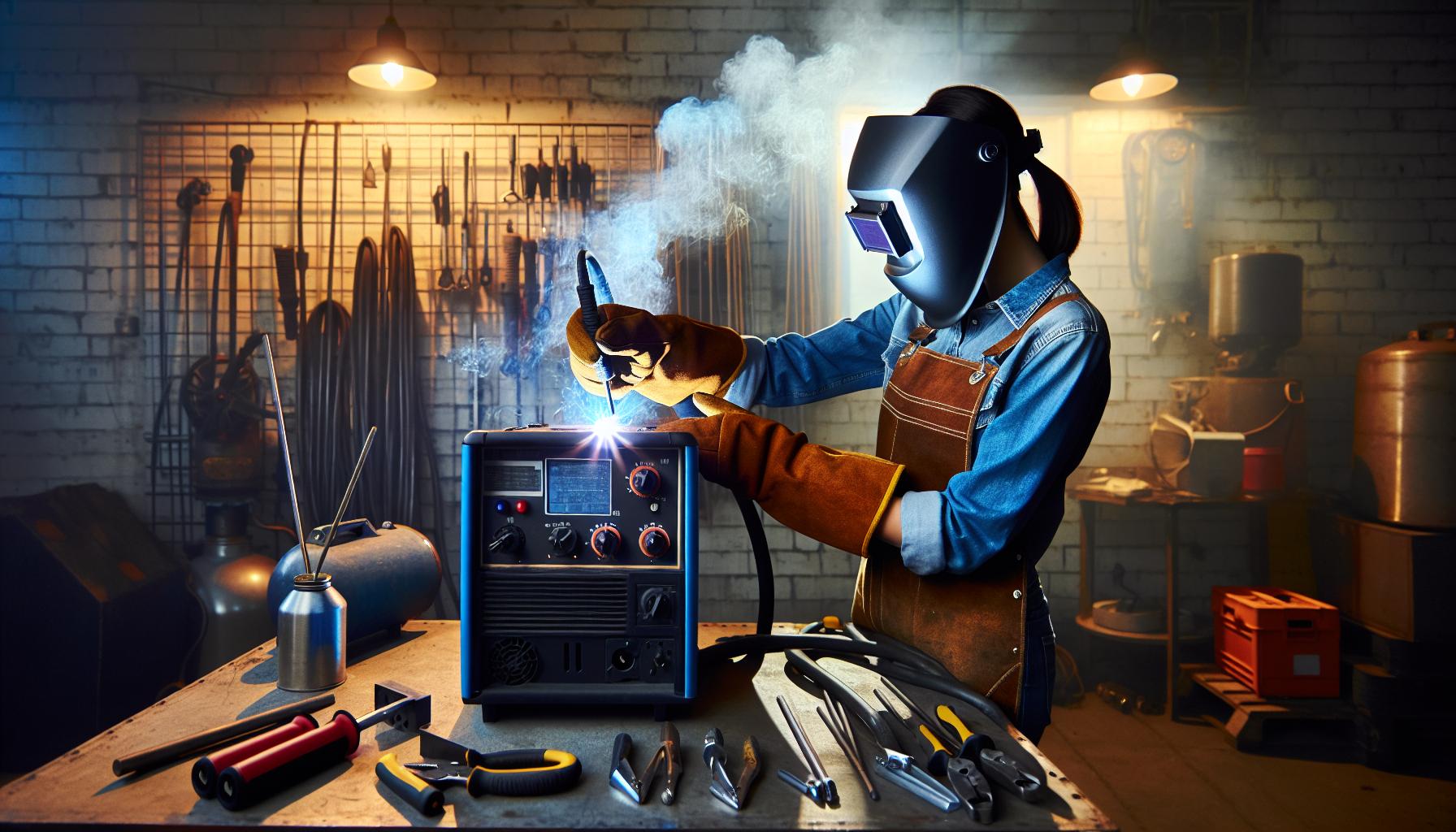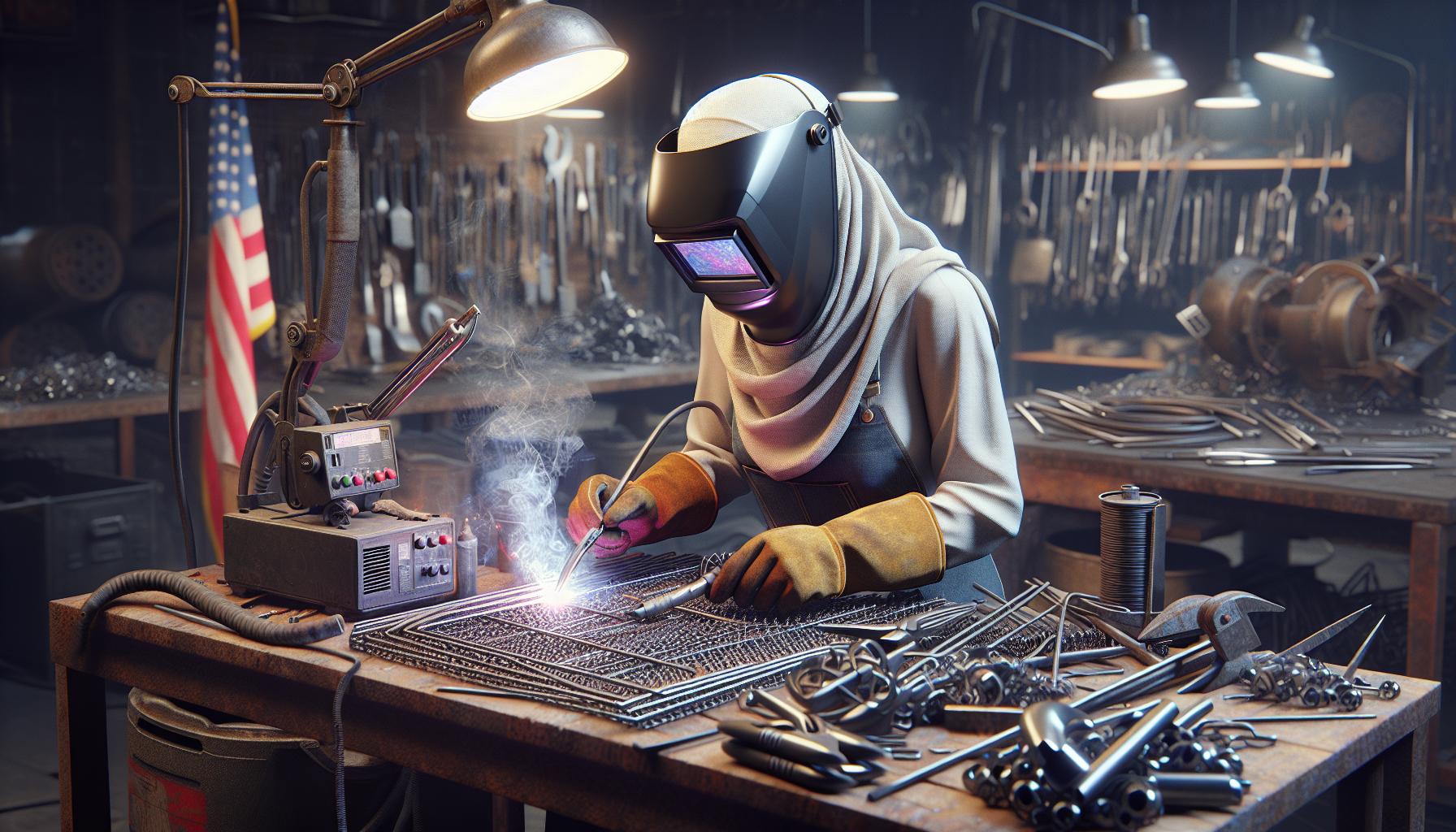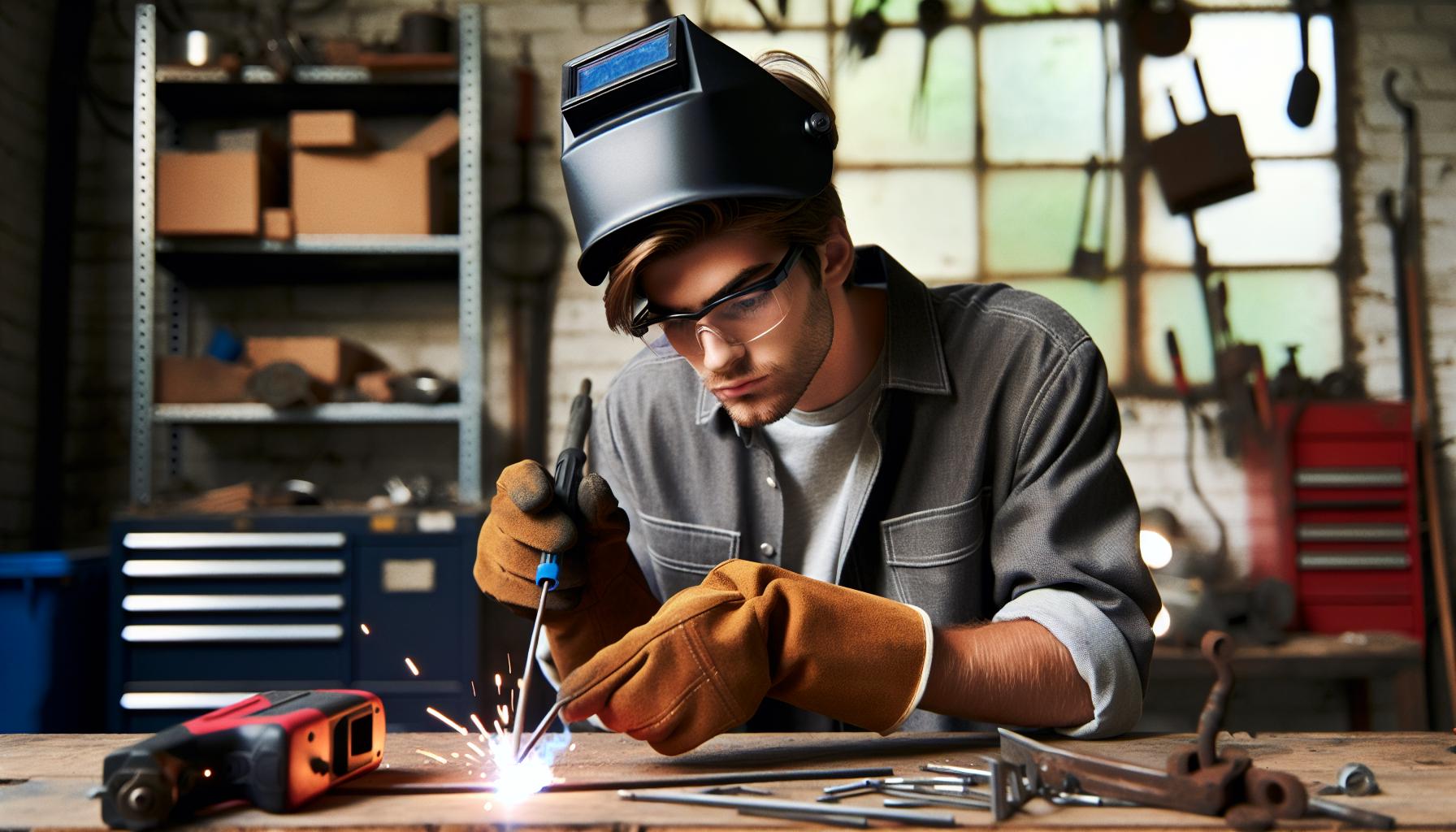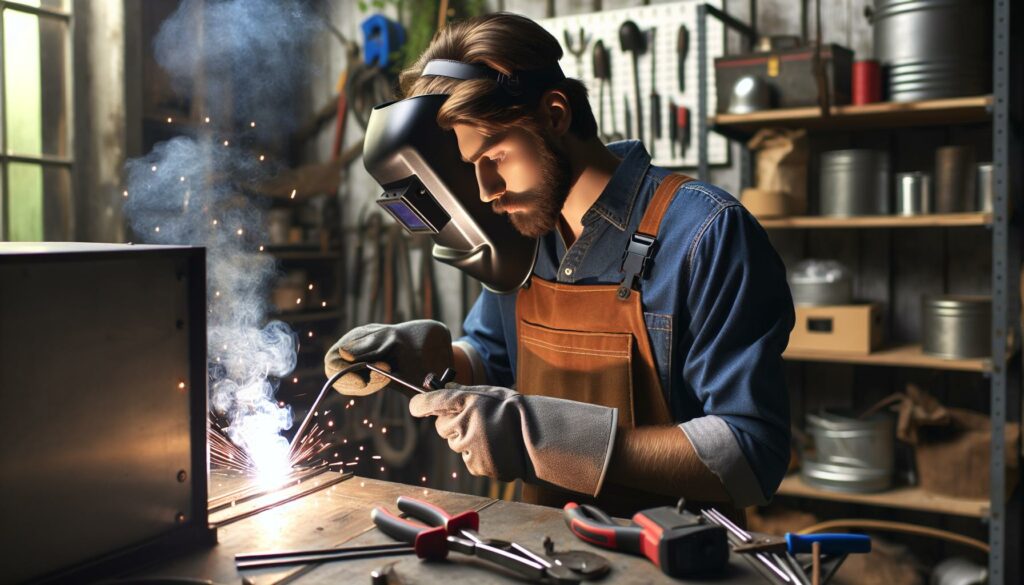Diving into the world of welding DIY projects opens up a realm of creativity and craftsmanship that’s both rewarding and practical. Whether you’re a seasoned metalworker or a curious beginner, welding offers endless possibilities to bring your ideas to life. From crafting unique furniture pieces to repairing household items, the skills you gain can transform simple metal scraps into functional art.
I’ve found that welding isn’t just about joining metal; it’s about the satisfaction of creating something tangible with your own hands. The beauty of DIY welding projects lies in their versatility and the personal touch they add to any space. With the right tools and a bit of practice, you can embark on projects that not only enhance your surroundings but also hone your skills. So, let’s explore how you can start your welding journey and unlock the potential of this fascinating craft.
Key Takeaways
- Diverse Project Options: Welding DIY projects cater to various skill levels, from simple garden art for beginners to intricate furniture and automotive repairs for advanced welders.
- Essential Tools and Safety: Success in welding projects requires the right equipment, including welding machines suitable for your project type and essential safety gear like helmets and gloves.
- Material Mastery: Understanding materials and their properties is crucial—common metals used include steel, aluminum, and stainless steel—this influences project outcomes and weldability.
- Skill Development and Safety Practices: Continuously hone your welding skills by practicing different techniques while prioritizing safety through protective gear and proper workspace ventilation.
- Common Pitfalls to Avoid: Avoid rushing projects and neglecting metal preparation to ensure quality welds, and regularly practice to avoid common mistakes and enhance overall welding skills.
Welding DIY Projects
Welding DIY projects offer a hands-on approach to learning metalwork. These projects cover a wide range of complexity, catering to both beginners and seasoned welders. Whether making simple garden art or constructing complex furniture, I find there’s a project suited to my skill level and interests.
Exploring Project Types: Several categories of welding projects exist. For beginners, straightforward projects like small sculptures or basic planters allow me to practice welding techniques and gain confidence. Intermediate projects like metal furniture or decorative gates demand more precision and skill, providing a challenging yet rewarding experience. Advanced projects like custom vehicle parts or intricate installations require expertise and can be detailed and time-consuming endeavors.
Essential Tools and Materials: Successful welding projects depend on having the right tools and materials. Basic equipment includes a welding machine, protective gear like gloves and helmet, and consumables like welding rods or wire. Material choices vary based on the project—commonly used metals are steel, aluminum, and stainless steel. Each material has unique properties that affect weldability and project outcomes.
Skill Development and Safety: A key to successful DIY welding projects is continuous skill development. Experimenting with different techniques and materials enhances my proficiency. Prioritizing safety is crucial; wearing protective gear and maintaining a well-ventilated workspace reduce the risk of accidents and health issues.
Welding DIY projects offer a platform for creativity and skill enhancement. They help me understand different techniques and material applications while providing a sense of accomplishment and practical rewards.
Essential Tools And Materials

Welding DIY projects require specific tools and materials to ensure success and safety. Having the right equipment enhances efficiency and the quality of the final product.
Welding Machines
A welding machine is the core component of any welding project. I prefer using MIG welders for beginners due to their ease of use. For versatility, a TIG welder handles various metals like aluminum and stainless steel. Stick welders suit tougher projects involving thick metal pieces, ensuring strong bonds.
Safety Gear
Safety gear is crucial when working on welding tasks. I always start with a welding helmet featuring an auto-darkening filter to protect my eyes. Fire-resistant gloves and a long-sleeved jacket safeguard skin from sparks. Sturdy footwear with steel toes provides protection against heavy objects.
Consumables
Consumables play a vital role in the welding process. For example, I use different types of welding rods or wires depending on the project. Steel projects typically require ER70S-6 wire while aluminum projects need ER4043 wire. Ensure an ample supply of shielding gas like argon or CO2 for efficient welding and reduced contamination.
Popular Welding DIY Projects

Exploring popular welding DIY projects offers endless creative opportunities. From garden art to home improvements and automotive repairs, these projects cater to various interests and skill levels.
Garden Art And Decor
Garden art presents an ideal starting point for those new to welding. Creating metal sculptures like abstract shapes or intricate garden stakes embellishes outdoor spaces with personal flair. Using reclaimed metal scraps, welders can fashion unique decors, including metal planters and bird feeders. A whimsical touch can transform any garden, making these projects both functional and visually appealing.
Furniture And Home Improvement
Furniture projects provide practical application for welding skills. Constructing metal tables, chairs, or shelves enhances interiors with industrial aesthetics. Welders at an intermediate level often craft custom pieces that merge wood and metal, optimizing both materials’ strengths. Examples include coffee tables with steel frames or bookshelves incorporating artistic metalwork. These projects not only refine welding abilities but also result in durable, custom furnishings.
Automotive Repairs
Automotive repairs challenge those with advanced welding expertise. Restoring or customizing vehicles requires specific techniques, including welding mufflers or patching rusted body panels. Using MIG or TIG welders, enthusiasts can fabricate custom parts or improve structural integrity in older vehicles. Mastery of these advanced skills not only enhances vehicle performance but also lowers repair costs, making it a valuable pursuit for automotive fans.
Tips For Beginners

Breaking into DIY welding requires a solid foundation of safety, technique, and practice. Here, I’ve compiled essential tips to help beginners start their welding journey confidently.
- Safety First: Always wear the necessary protective gear, including a welding helmet, fire-resistant gloves, and proper footwear. This equipment protects against burns and harmful UV exposure.
- Start Simple: Choose basic projects that match your skill level. Projects like metal sculptures or small garden decor provide a manageable introduction to welding techniques.
- Master the Basics: Focus on understanding welding types, like MIG, which is user-friendly for beginners. Practice different welding positions, such as flat and horizontal, to build proficiency.
- Understand Your Tools: Familiarize yourself with your welding machine and settings. Consult the manufacturer’s guide to optimize performance and achieve quality welds.
- Prioritize Cleanliness: Ensure metal surfaces are free from rust, paint, and dirt before welding. Clean surfaces allow for stronger welds and reduce defects.
- Incremental Practice: Dedicate time to practice consistently. Begin with simple weld beads on scrap metal, gradually progressing to more complex joints as you gain confidence.
- Seek Guidance: Engage with online forums and tutorials for community support. Mentorship from experienced welders can provide valuable insights and troubleshooting advice.
By integrating these tips into your practice, you can enhance your skills safely and effectively in the dynamic field of welding DIY projects.
Common Mistakes To Avoid
Encountering issues in DIY welding projects often stems from common mistakes that can easily be avoided. I frequently notice beginners and even some intermediate welders making these errors. Let’s go over a few key pitfalls to watch out for in your projects.
- Neglecting Safety Gear: Not wearing proper gear poses significant risks. Always use a welding helmet, fire-resistant gloves, and sturdy footwear to protect against sparks and hot metal.
- Improper Equipment Settings: Equipment settings impact the quality of your welds. Ensure correct amperage and voltage for your project, adjusting settings based on the metal type and thickness.
- Rushing the Process: Hastening through projects often leads to poor quality welds. Allow time for preparation and execution, focusing on technique and precision.
- Ignoring Metal Preparation: Clean surfaces ensure strong welds. Remove rust, paint, or oils before welding to increase the integrity of the joints.
- Skipping Practice: Regular practice is vital for skill improvement. Try different techniques and work on various projects to build confidence and competence.
Avoiding these mistakes can lead to smoother, more successful welding DIY projects, enhancing both your skills and finished works.
Welding Practical
Welding DIY projects open up a world of creativity and skill-building that’s both rewarding and practical. Whether you’re a beginner just starting with simple sculptures or an advanced welder tackling custom vehicle parts, there’s always something new to learn and create. The right tools, a focus on safety, and a willingness to practice can transform metal scraps into stunning and functional pieces. Embrace the challenges and joys of welding, and you’ll find endless opportunities to enhance your surroundings and develop your craftsmanship.

